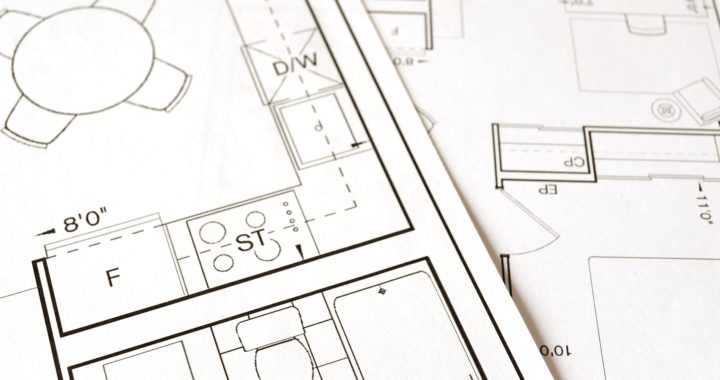You’ve decided to build; now it’s time to consider “how?”. To deliver a quality construction project on time and on budget, you must successfully coordinate the efforts of the Owner, Architect and General Contractor in an accepted and appropriate contract form. There are three basic project delivery methods: Design/Bid/Build, Construction Management, and Design/Build. Each method has its own advantages and disadvantages, and some methods are better suited for certain kinds of projects than others.
Design/Bid/Build
This method usually starts with the Owner selecting and entering into a contract with an Architect or other design professional. The Architect fully develops the design and creates “bid documents” that are then made available to general contractors for competitive bids. The bid process can either be an open bid or by invitation. Once a suitable Contractor is selected, the Owner and Contractor execute a separate contract to build. The Contractor, in turn, engages subcontractors and suppliers to perform the work.
The Design/Bid/Build approach is best when the Owner wishes to be actively involved in the design process, requires a fixed cost before commencement of construction, and has sufficient time to permit the design to be fully completed before construction bids are obtained. This method is often used for very large, complex projects. Since the design is fully developed, an “apples to apples” comparison of multiple bids can be made.
The primary disadvantage of the Design/Bid/Build process is the Architect’s limited ability to establish an accurate cost estimate; consequently, the Owner may not know the cost of his project until the bids are received. If the bids are higher than the budget, costly redesign is often required. Other disadvantages include:
- Owner is responsible for the completeness and accuracy of the Architect drawings
- Contractor has no input regarding more cost-efficient materials or construction methods
- Adversarial relationships can occur between the Architect and the Contractor
- Contractor is forced to use the least cost approach to be low bidder
Construction Management
One variation of the Design/Bid/Build method is to secure the services of a Construction Manager. A Construction Manager At-Risk may be used instead of bidding the project to General Contractors. An Agency Construction Manager acts as an advisor to the client. It is important to understand the “risk shift” inherent in these two Construction Management methods.
The most common form of Construction Management is CM At-Risk, where an independent professional reduces the risk to the Owner because a Construction Manager At-Risk (CMAR) holds the subcontract agreements. Often, the Construction Manager is also the Contractor. Other advantages include:
- Owner is provided advice on budget, schedule, and constructability during design phase
- CMAR can provide value-engineering advice to save client time and money
- CMAR is responsible for schedule and budget
- CMAR typically provides a Guaranteed Maximum Price (GMP)
- Owner knows the Contractor’s profit on the project and any change orders
- Construction can begin without the design being fully completed
Disadvantages:
- This method requires a high level of communication between the Owner and the CMAR
- Requires cooperation of the Architect to work out details of design before or during construction
- Construction costs may run over if design mistakes are not detected early
- Involves negotiation of two separate contracts and requires careful contract language establishing responsibilities of each party
The delivery method referred to as Construction Manager – Agency or CM (Agency) is a fee-based service in which the CM (Agency) acts as the Owner’s representative during each stage of the project. The CM (Agency) is the Owner’s trusted construction expert who advises the Owner and acts as a “go to” person for all aspects of the project including design, constructability, value-engineering, scheduling, negotiations with Architect and Contractors, and qualification of design professionals, Contractors and subcontractors. It is important to note that the CM (Agency) is an advisor, but is not accountable for schedule and budget and that the Owner enters into the trade contracts, not the CM (Agency). Depending on how the contract is structured, the CM (Agency) may be compensated for some general condition items. This agreement places the majority of the risk during construction on the shoulders of the Owner.
Design/Build
In the Design/Build method, the Owner contracts with a single entity to provide both the design and construction of the building. The intent of the Design/Build form of construction is to foster teamwork between the Architect and the Contractor early in the project and facilitate early budgeting, programming, and financing. It also promotes review of the design as it proceeds for constructability and cost of construction. Well-suited for fast-track construction, design/build projects are often more cost-effective and less susceptible to delays in the work than traditional projects.
Perhaps the greatest advantage for the Owner is that the Owner only has to look to one party for the design and the construction. If a problem arises, the Design/Builder is responsible, whether it is a design or construction issue. Because the Architect and the Contractor are on the same team, many Owners observe a reduction in disputes, and insurance companies have noted a reduction in claims with Design/Build projects.
The two primary disadvantages to the Design/Build method are:
- The Owner does not receive the benefit of the system of “checks and balances” that exist when it contracts separately with an Architect and a Contractor
- It is difficult for the Owner to verify that the best price has been achieved for the work
Conclusion
While other less proven delivery methods exist, the three methods described above are most typical. Standard, proven contracts prepared by Association of General Contractors (AGC) and American Institute of Architects (AIA) are available for any of these delivery methods. For further information about the best delivery method for your construction project, contact us at www.van-con.com or 800-216-8696.

